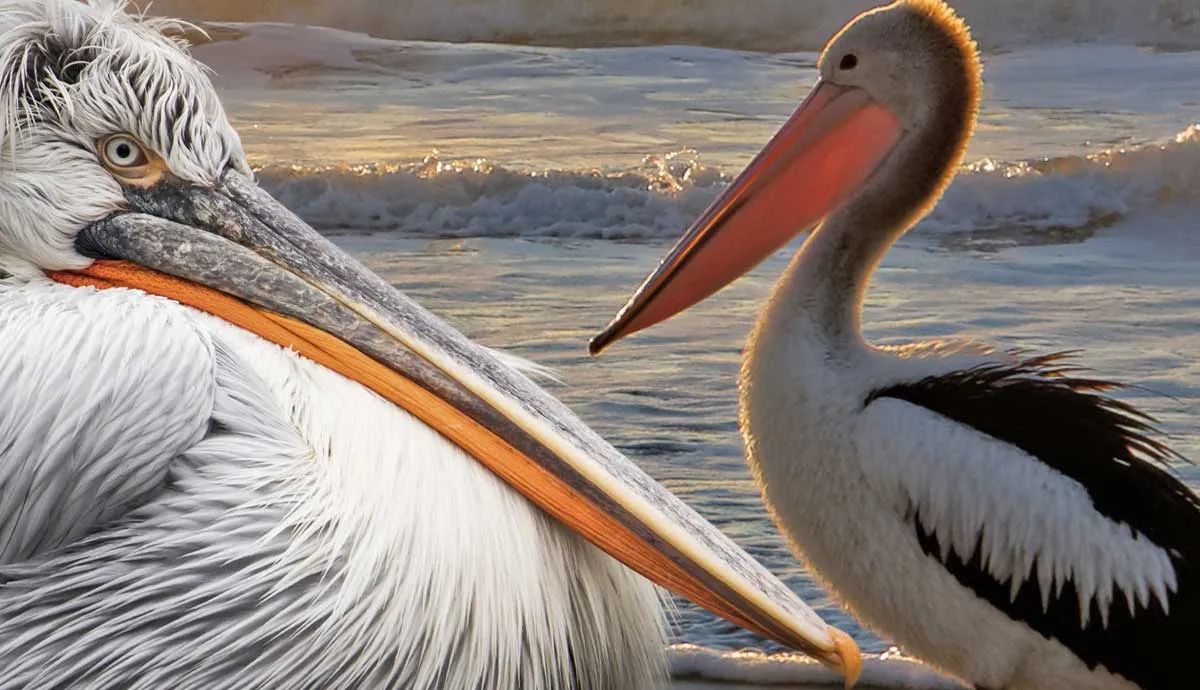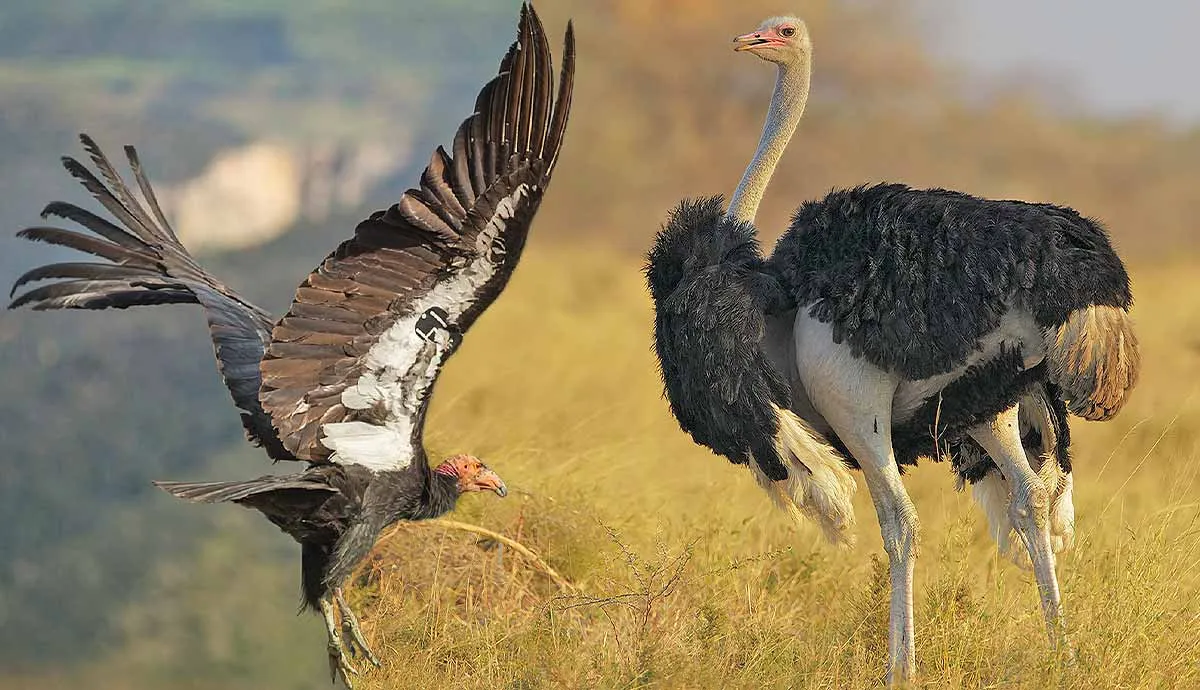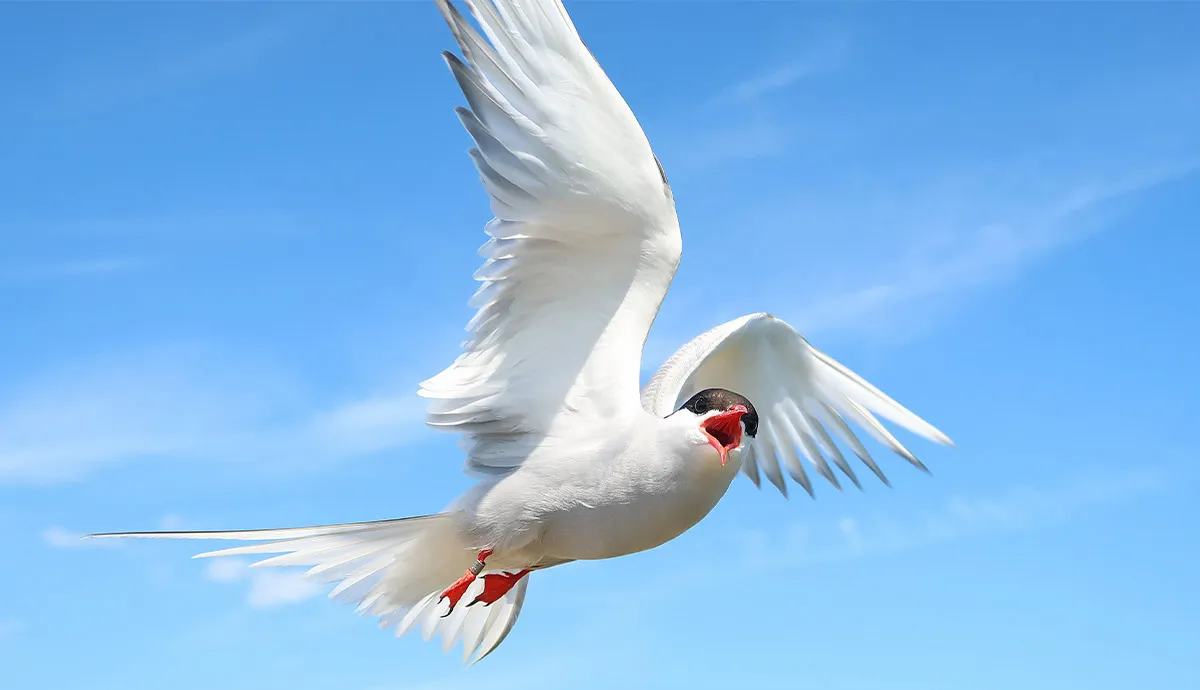Pelicans are remarkable creatures, known for their incredible bills and fascinating pouches. Beyond their striking outward appearance, the anatomy of pelicans is just as impressive. These beautiful birds really have been built to survive and thrive in their ecosystems.
In this article, you’ll learn all about the intricate world of pelican anatomy, shedding some light on the most fascinating aspects of our feathered friend.
The Pelican Pouch Is Meant for Scooping, Not Storing
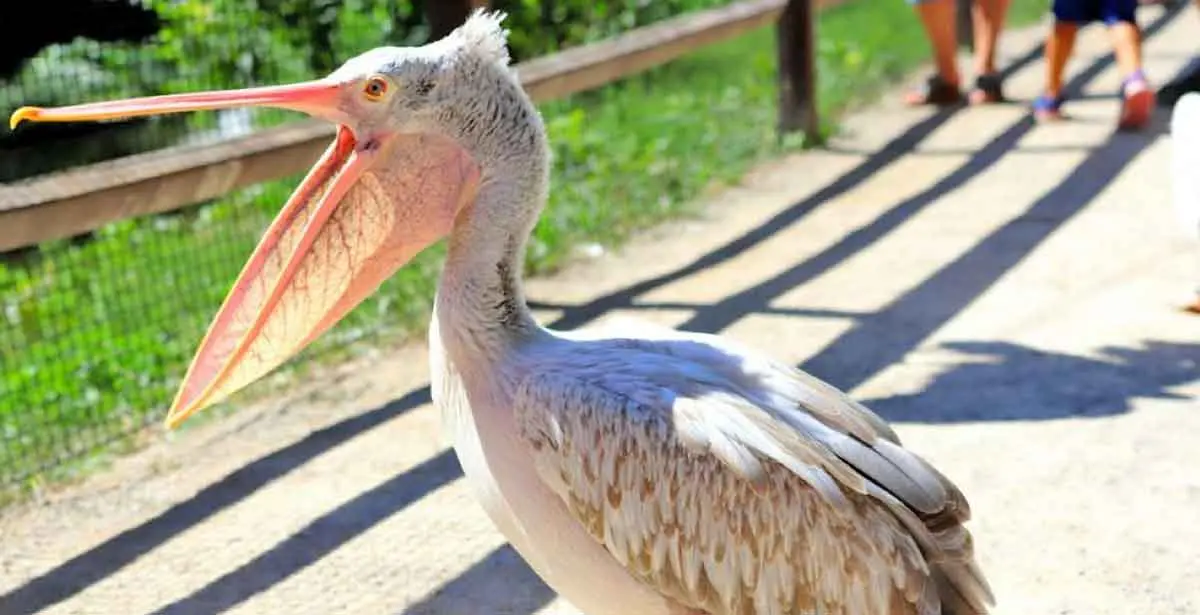
Step aside, kangaroos, you’re not the only animal with pouches in town. Easily one of the most distinctive and recognizable characteristics of pelicans is their extraordinary throat pouch, which is called a gular pouch.
This unique anatomical feature sets pelicans apart from many birds, and it has solidified the pelican as one of the most unique birds in the animal kingdom. But, other than making the pelican a bit of a celebrity amongst ornithologists, what do gular pouches do? The gular pouch is a stretchy, elastic-like area of featherless skin that is located under a pelican’s beak. It connects the lower mandible of the beak to the bird's neck.
Most people believe that pelicans use their pouches as a type of lunch box-like storage solution, but that’s not quite right. In reality, the gular pouch is actually more of a fishing net. It acts as a scoop, and it can temporarily hold an astonishing amount of water and fish – triple what the bird’s stomach can hold! This ingenious pouch allows pelicans to consume massive meals in a single gulp.
Pelicans Have Seriously Long Wingspans
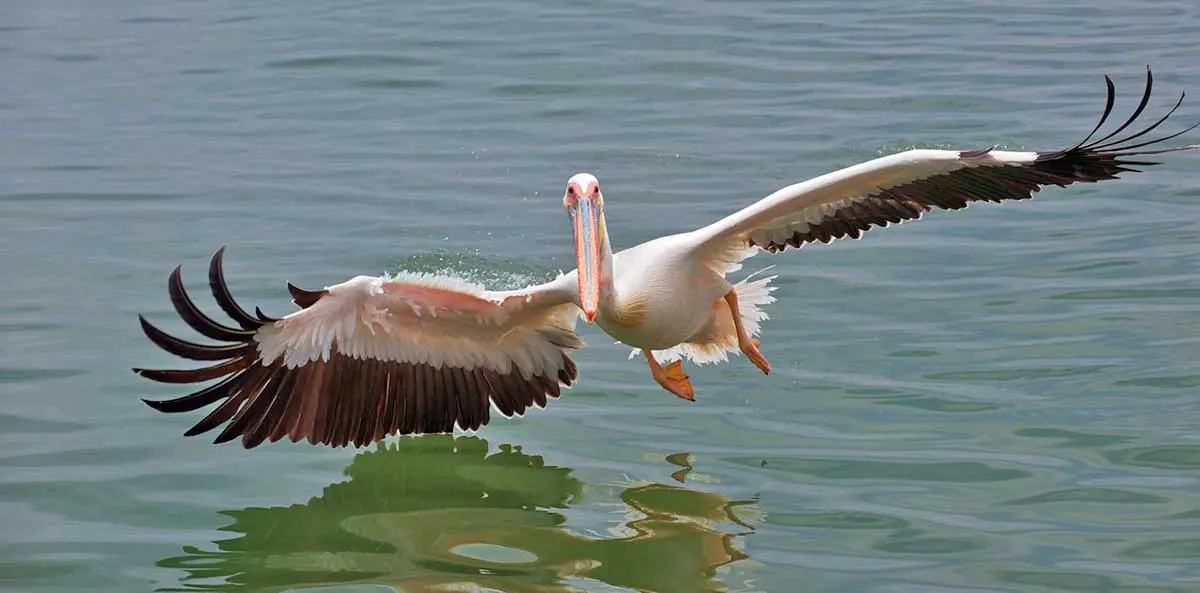
Pelicans are renowned for their impressive wingspans, which range from 7.5 feet (the brown pelican’s usual wingspan) to 11 feet (the great white pelican’s usual wingspan).
This exceptionally large wingspan doesn’t just exist for us humans to marvel at. It serves a crucial purpose in the pelican’s way of life. The pelican’s large wingspan enables it to soar gracefully over water, and it assists in migration, too. These birds, though not one of the farthest migrating birds, can travel thousands of miles between their breeding and wintering grounds, and their large wings play a large part in them covering such extensive distances.
Having such a large wingspan also means that they can quickly charge direction mid-flight and also achieve peak stability whilst in the air. Second only to the incredible Wandering Albatross, pelicans have the largest wingspan of all birds.
Pelicans Are Pretty Heavy
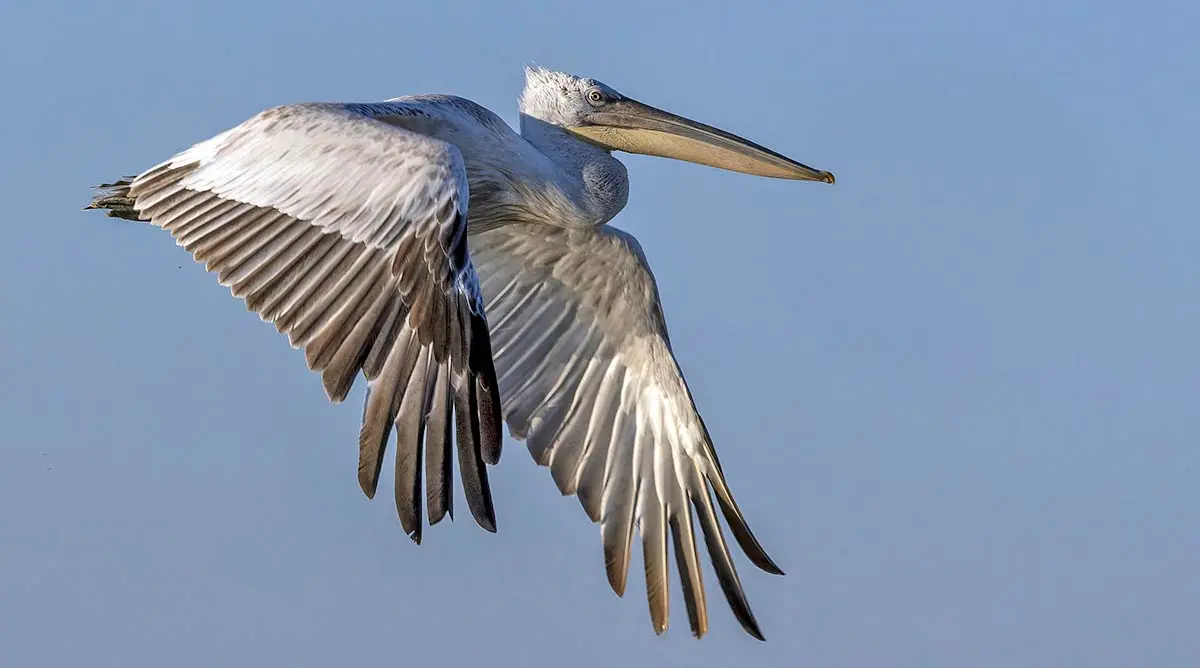
Did you know that pelicans are one of the biggest birds in the world, and the Dalmatian pelican is the heaviest flying bird on the planet? That’s right. A fully grown Dalmatian pelican can weigh in at a whopping 33 pounds.
Though the Dalmatian pelican is the heavyweight champ of all, other pelican species also tip the scales quite spectacularly. Pelicans typically weigh between eight to 26 pounds, depending on the species.
The weight of a pelican impacts the way they fish. Heavier species, like the Dalmatian pelican and the great white pelican, fish slowly and rather lazily. They’ll slowly swim along until they spot their food. Then, they’ll quickly dunk their head underwater and scoop up their meal. After which, they go back to their low-speed leisurely swim.
On the other hand, lighter pelicans are more proactive hunters. For instance, the brown pelican, which is the smallest pelican species and weighs just eight pounds, is an incredible hunter. Brown pelicans are plunge divers. Speaking of which…
Diving Is Part of the Pelican’s Nature
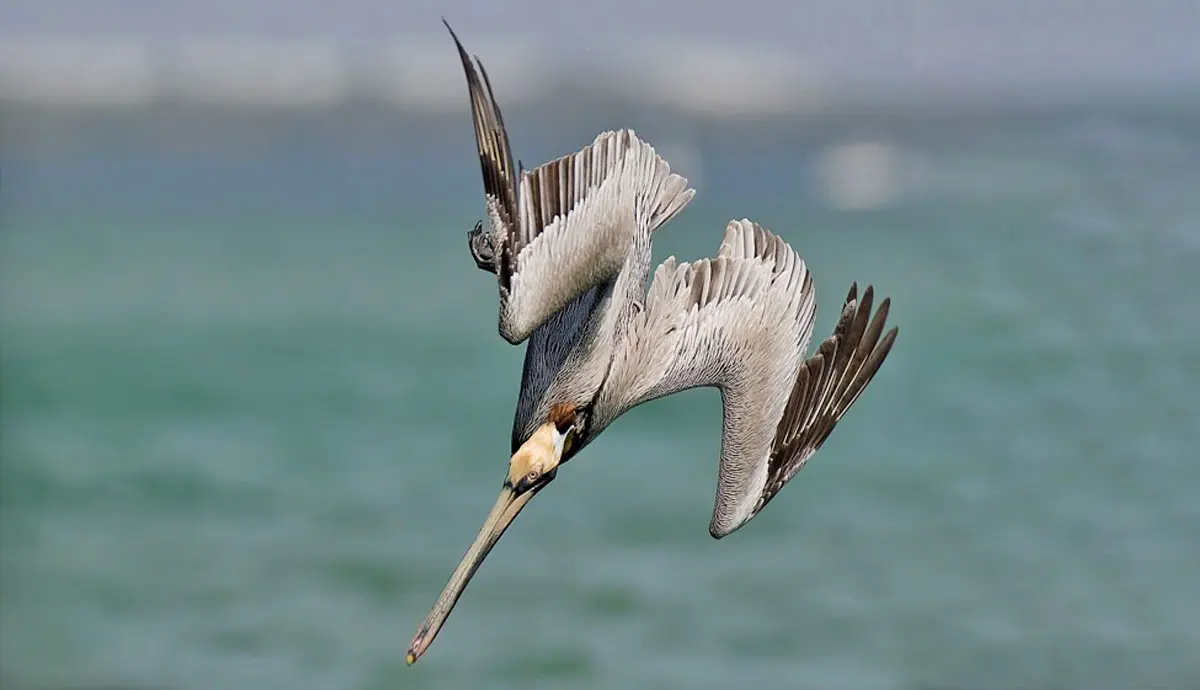
Unlike their lighter (and possibly lazier!) fellow pelicans, instead of just scooping their food up, brown pelican and Peruvian pelicans dive for it. Peruvian pelicans dive from heights of around six feet, while brown pelicans plunge down into the water from a staggering 60 feet!
So, the Peruvian pelican is more of a shallow diver, while the brown pelican is classed as a plunge diver. Plunge diving is relatively uncommon in the wild world, and only gannets, boobies, kingfishers, terns, and pelicans are known to practice this hunting technique.
Scientific studies reveal that pelicans and the other plunge-diving aviators mentioned above basically have their specialized beaks and necks to thank for their amazing diving ability. Their wings don’t hurt either, and of course, their magnificent pouches come into play, too.
Pelicans’ Bodies Are Made for Hunting Prey
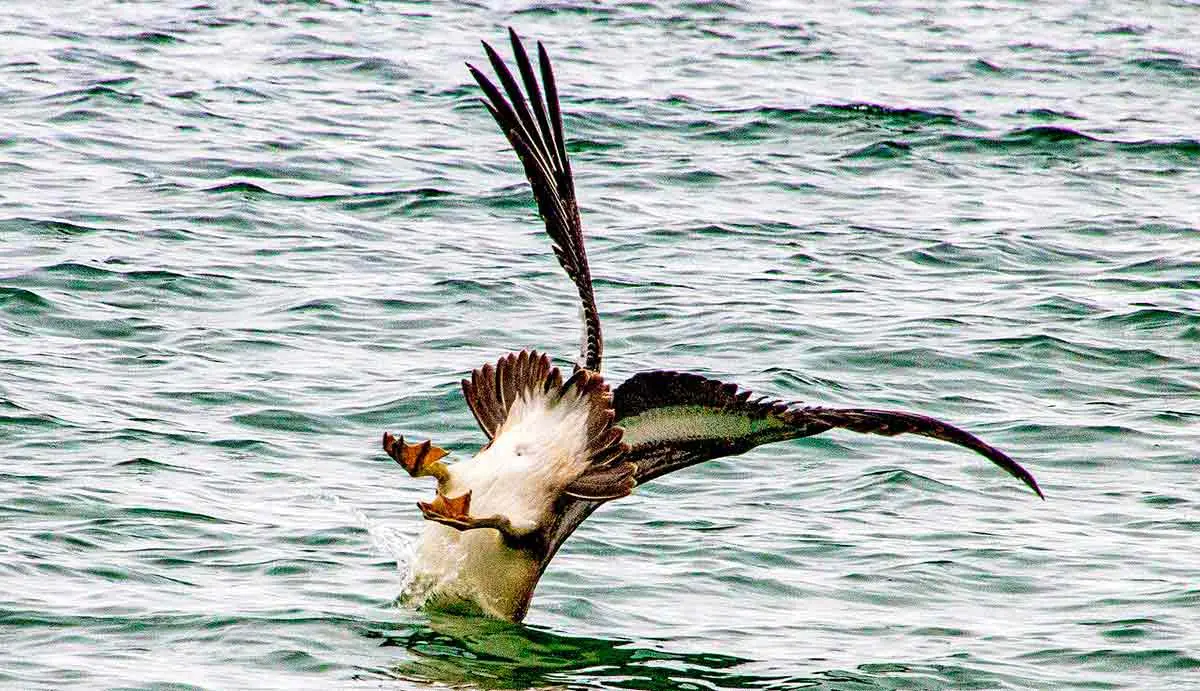
The bird’s high beak angle ratio means their beaks are shaped in a way that allows them to easily penetrate the surface of the water and scoop up the fish below. Their neck muscles contract to prevent vertebrae breakage, and specialized air sacs in their neck act like a shock absorber, cushioning the impact when they hit the water’s surface.
Plus, the gular pouch essentially acts as a life parachute to slow the bird down even more. Additionally, they’re able to throw their wings back to help them dive into the water smoothly and protect the bones. All in all, these physical adaptations make this beautiful bird well-suited for diving.
If you haven’t seen this act in person, you’re missing out, as it really is quite impressive. Side note: one of the top animal sanctuaries near Miami, the Pelican Harbor Seabird Station, is the perfect place to witness this spectacle first-hand, so if you’re in the area, you must stop by.


